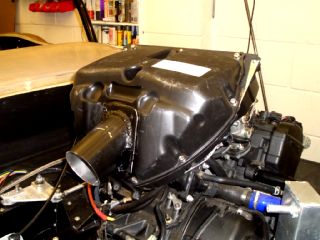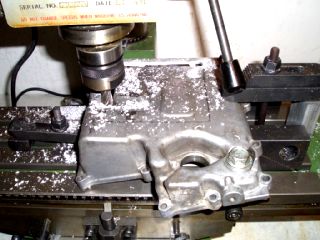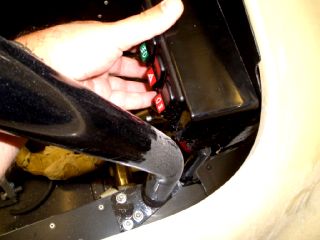
| Well, it has been a while since the last update. The bust finger nail did slow me down a bit, and 2 se7ens list tours took a fair bit of time, as did quite a lot of work and 2 weddings, but the real reason why this update's taken so long is because I've spent a lot of time doing a lot of really really boring stuff on the car. In particular, the bonnet bulge o' doom. |
 |
Even with the modified airbox, there was still quite a lot of it sticking out of the top of the bonnet. Neither the 750MC scrutineers or the SVA inspector was going to let me get away with simply having a hole in the top of the bonnet with the airbox (and various other engine bits) sticking out, so I had to make up a bonnet bulge to cover it. The first step was to put down a load of packing tape (God's own easy-to-apply self-adhesive release film) to the bonnet and fit a sheet of thin ali over the air box and other engine-related gubbins making a bid for freedom out of the top of the bonnet. |
| In the meantime, the cause of all these problems, the air-box, required
some more work on it. Because the modifications to the airbox meant that the standard air filter was now sitting right above the engine, breathing warm stinky air, I needed to find a way to put the filter elsewhere.
What I've done is to blank off the hole where the air filter would normally sit, using an offcut of black GRP -
I've used GRP on the basis that it'll act as a slightly more effective thermal barrier than a piece of ali. You
can just about see the edge of the GRP plate at the bottom of the airbox. Then I've made up a bit of ali (doing this in GRP would just take too long...) which is basically just a bent plate with a hole in the middle and an 80mm tube sticking out of it. An 80mm hose will go onto this, with a remote air-filter stuck on the other end. However, I need to do some other jobs (like finish the dashboard, so I can put the steering column back in) before I can work out where the best place for the air filter is going to be. |
 |
 |
As I mentioned in my last page, I've decided to modify the sump to give a bit more oil capacity. The bottom of the sump, as installed, is at a slope so the idea is to extend it so the bottom of the sump is level ith the ground (and the bottom of the chassis). To this end, I've got a second sump (off a 2005 bike, which is why it's silver and not black). The first stage was to chop a gert big hole in the bottom of the sump. I used the milling machine to do this. |
I've already had to chop part of that bit of the box away to make
it clear the front legs of the roll cage, and I'm not sure it's really the best place to put them. I quite fancy
having them on the transmission tunnel top like Tim has all his switches but I
haven't yet worked out a way of securing the cable so it doesn't get wrapped round the propshaft while at the same
time allowing enough space to disconnect the switches from the rest of the loom if I want to remove the panel.

 |
... although I haven't updated this site for a while, I am making steady progress on the car. More to follow, hopefully later this week. |